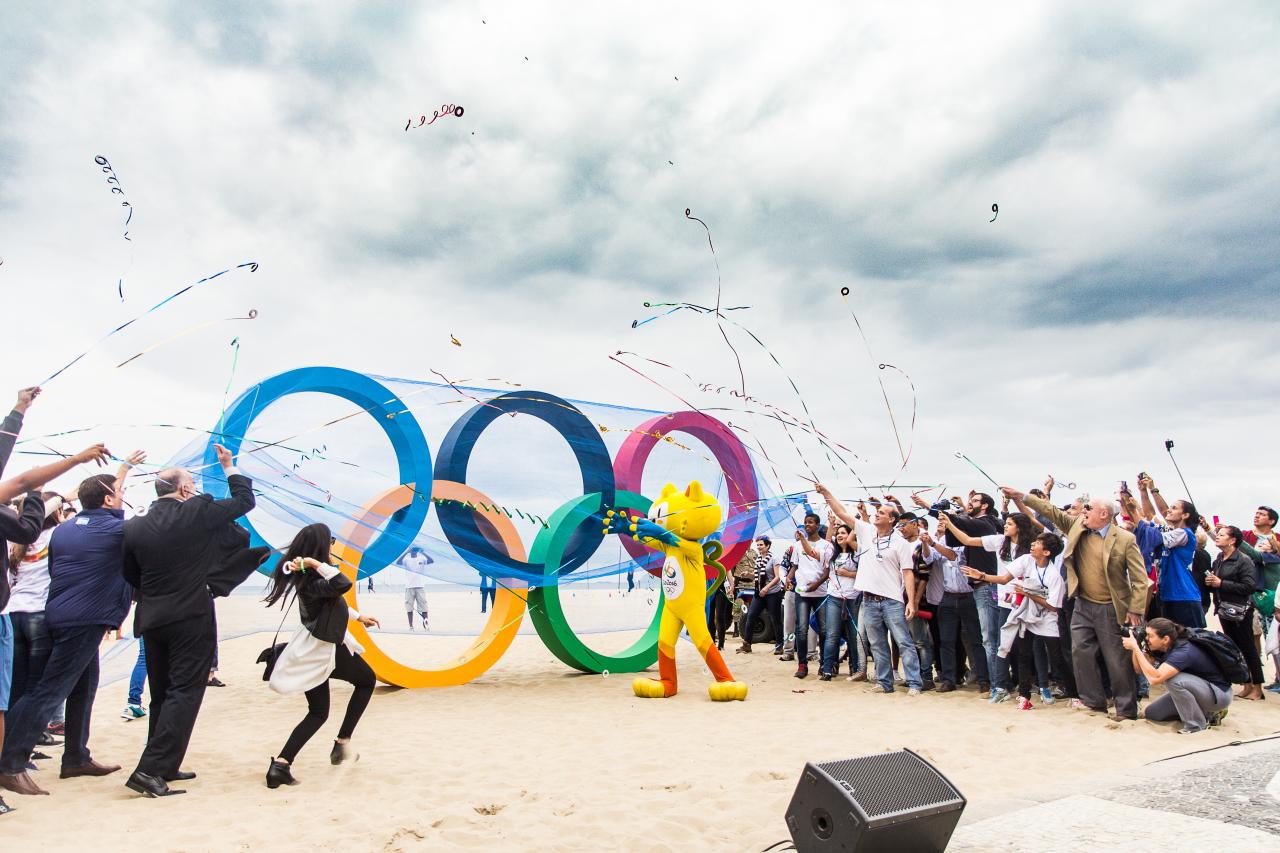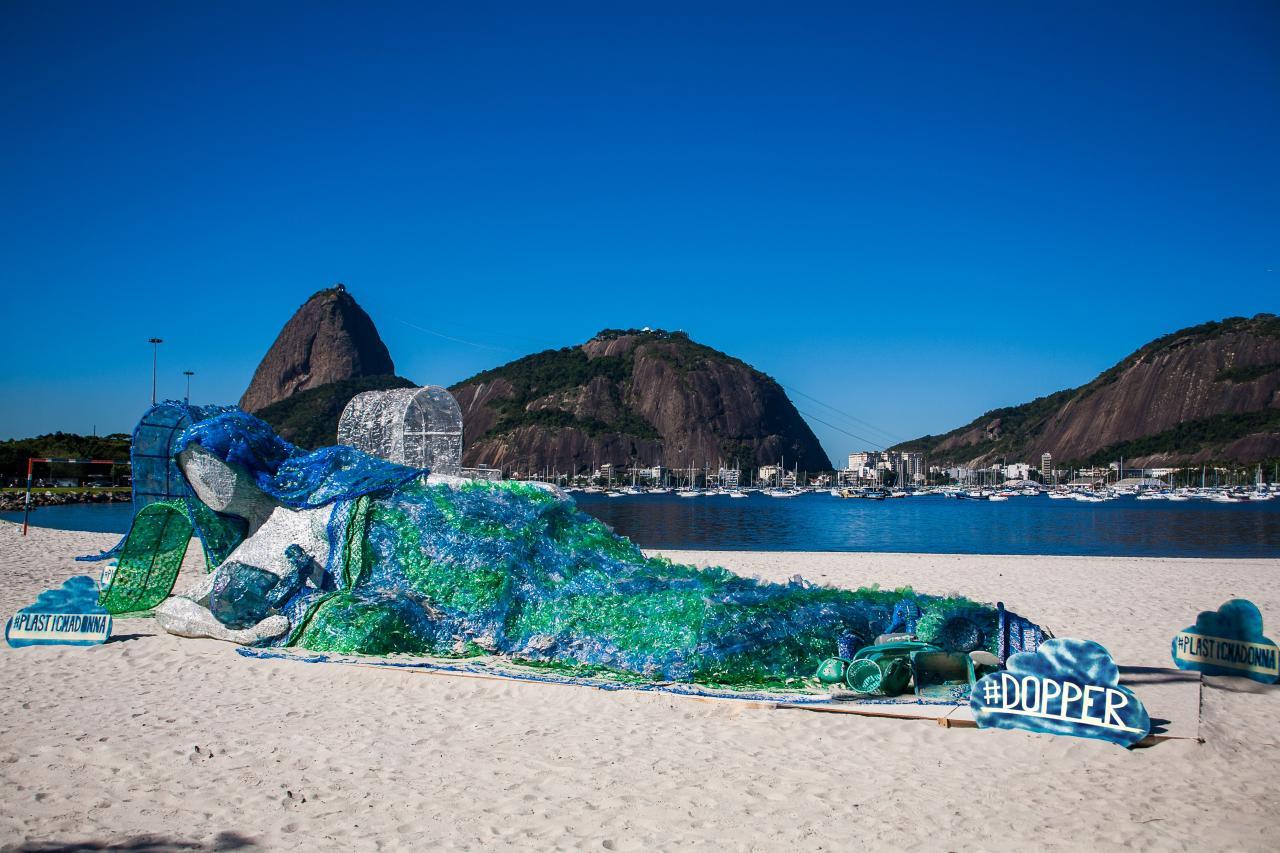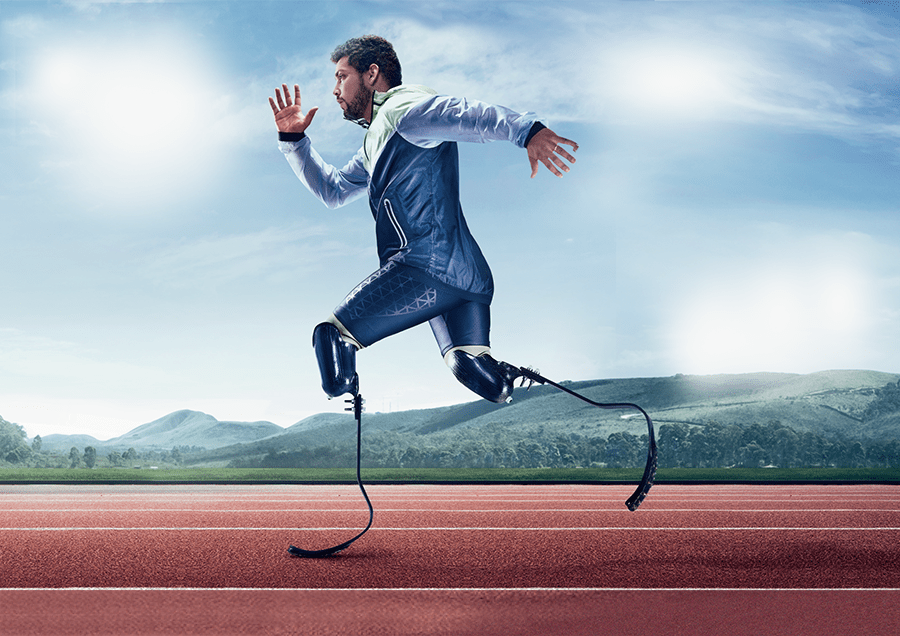August 5, 2016 Updated 8/5/2016
Email Print

Dopper/Eliseu Fiuza The Olympic ring sculpture on Rio’s Copacabana Beach are made of 143 pounds of recycled plastic bottles.

Dopper/Eliseu Fiuza The Plastic Madonna at Rio’s Botafogo Beach is made with waste plastics.
Whether the medal being awarded at the Rio 2016 Olympics Games in Brazil this month is gold, silver or bronze, the ribbon those medals are hung from will come from plastics, with half the content coming from recycled bottles.
Innovative plastics use is being highlighted in the Rio 2016 Olympic Games, with applications ranging from sports equipment to artificial grass and event venues, along with ribbons for medals and sculptures made from recycled bottles.
Plastics bottles also are part of efforts to highlight pollution, including plastic waste, in Guanabara Bay, where Olympic sailing competitions will take place. An effort to start cleaning the bay was launched after the 2014 FIFA World Cup, when the Dutch government created the Clean Urban Delta Initiative.
One of the projects was the Plastic Madonna sculpture, made from 5,000 plastic bottles collected in Rio de Janeiro. It was coordinated by Dutch social enterprise Dopper with the support of local organizations and government, and built by Brazilian artist Eric Fuly, based on the design by Dutch artist Peter Smith.
Plastic Madonna was unveiled in Rio’s Botafogo Beach and now is in one of the city’s public parks, with the intent to bring awareness to plastic pollution.
“The Plastic Madonna is a reference to the fact that we are literally feeding our future generation with plastic,” Dopper ambassador in Brazil Ellen Sluis told Plastics News. “Plastic is in the oceans, fish misunderstand plastic for seaweed and eat it. We eat the fish and the plastic enters our food chain.”
About 143 pounds of recycled plastic bottles were also used to build the Olympic Rings sculpture on Copacabana Beach.
Sluis said Dopper will also be responsible for building the Paralympic Games symbol using recycled plastic bottles, replacing the Olympic Rings sculpture.
Cutting the carbon footprint
Dow Chemical Co.’s micro-foaming technology for packaging is part of an initiative to cut 4.4 billion pounds of carbon dioxide impact at the Summer Games.
“We used Dow’s low carbon technologies to deliver this mitigation,” said Guilherme Dias, Dow’s commercial leader for the Olympic Games, “It’s similar to a carbon credit, but it is actually a climate benefit that we are delivering to the Organizing Committee to mitigate the carbon consumed by the games.”
The micro-foaming solution is made with new production methods that lead to higher productivity and improvement in the extrusion process of films, using 15 to 25 percent less raw material.
“The technology is also reducing the cost of packaging production, one of the main concerns for most of the people working in the packaging chain,” said Charly Eid, marketing manager for Dow’s packaging business in Latin America.
Adoption of polyurethane-based insulation panels, to reduce energy consumption in construction, is another plastic-related action that will help Dow deliver carbon footprint mitigation.
Two other initiatives in the agricultural market, and biomass use to generate energy in some of Dow’s units in Brazil, also are helping to balance the greenhouse gas emissions from the Games.
Plastics for venues, performance

Braskem Braskem sponsors Alan Fonteles, a Brazilian parathlete competing in the Paralympics.
Rio’s field hockey arena Deodoro Olympic Park was revamped with synthetic turf made with linear low density polyethylene and polyurethane technologies, supplied by Dow and German athletic surface producer Polytan STI.
Maracanã, one of the largest soccer stadiums in the world and the host of the Olympic opening and closing ceremonies, had Dow plastics applied to drainage and irrigation pipes below its natural grass.
The stadium was upgraded for the 2014 FIFA World Cup, when recycled PET bottles were used to make 6,773 seats in the 78,838 seat stadium.
Another five venues of the Olympic Games holding shooting, fencing, basketball, hockey, handball and swimming competitions had seats, armrests, bolts and other items made from nylon supplied by Italian company Radici Group.
Plastic, which have been used in artificial limbs since 1937, are again playing a prominent role in the Paralympic Games.
Currently, most of the Paralympic athletes use flex-foot cheetah prosthetics made from plastics and carbon fiber. They were considered more efficient than human feet during the Beijing 2008 Paralympic games.
Braskem SA is sponsoring the Brazilian Parathletics team and double-amputee runner Alan Fonteles, who is participating in the Rio Paralympics.
“This sponsorship is the result of Braskem’s belief that chemical and plastic make people’s lives better,” said Marcelo Lyra, Braskem’s vice president for institutional relations and development, in a statement. “Prosthesis, which are made from a material that incorporates plastic, are an example of this, providing a leap in quality of life and performance for parathletes.”





























